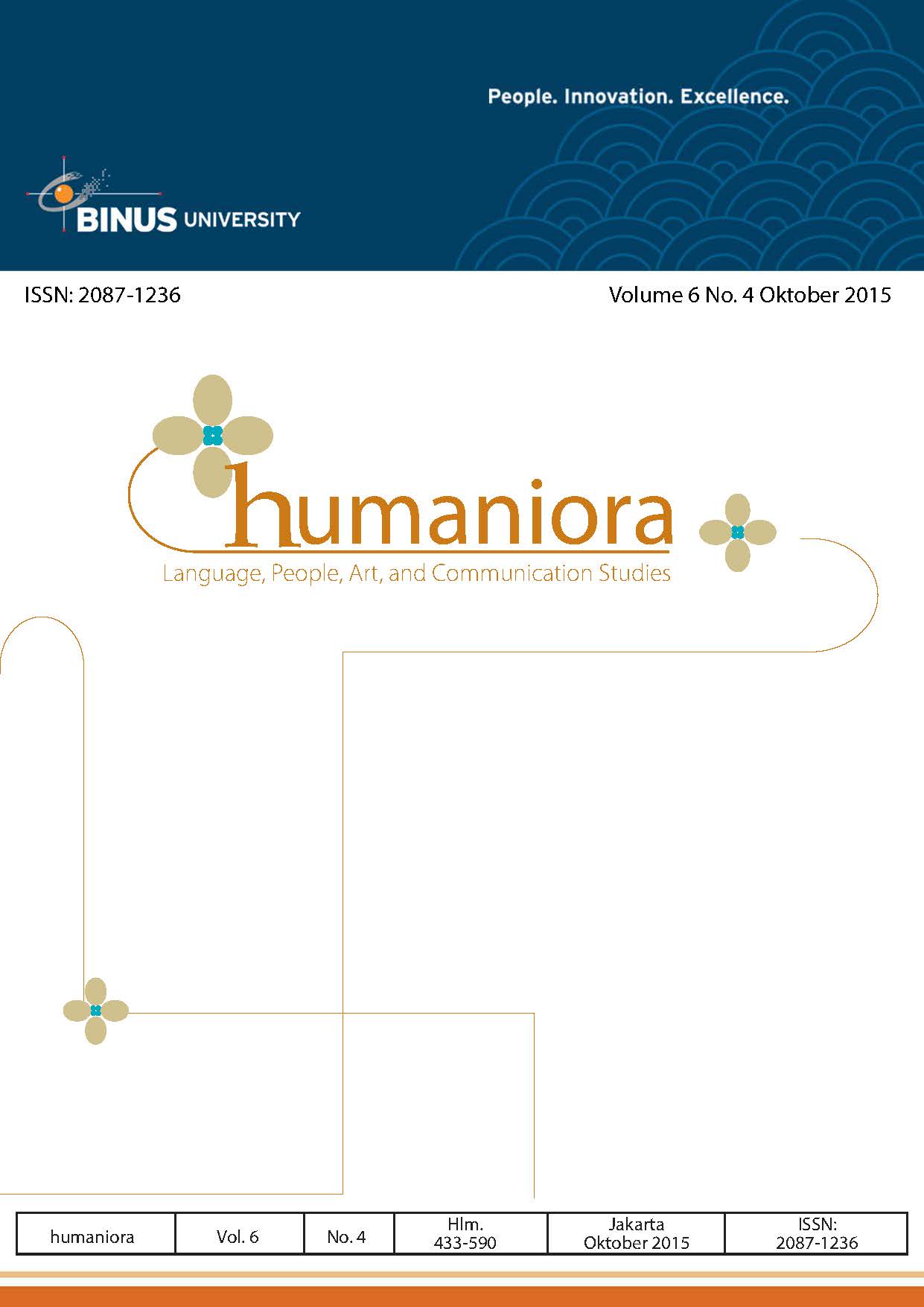The Changes of Students’ Toefl Score After One Year Learning
DOI:
https://doi.org/10.21512/humaniora.v6i4.3379Keywords:
English competence, TOEFL scores, Self Access Language Learning CenterAbstract
BINUS students are supposed to increase their English competence indicated by their TOEFL scores. This paper aims to observe the differences between studens TOEFL scores obtained when they entered BINUS and the scores after they joined TOEFL courses at BINUS for one year. The participants were 121 students. The data for the entrance test were taken from the BINUS data center and the final test data were taken from their final test at English class. The data were analysed using statistics especially the descriptive statistics, comparing means, and correlation. To support the quantative data, a set of questionnaires was distributed to those 121 students. The results show that the students’ TOEFL scores have increased significantly in the final test compared to those in the entrance test. The low achiever students showed a better performance than the higher ones. Students’ motivation and background support their English study. Students proved to have the most problem in listening. The results of the research are expected to be the input for English lecturers to improve their teaching especially the existence of SALLC (Self Access Language Learning Center).
Â
References
Carson, J. E., Carrell, P. L., Silberstein, S., Kroll, B., & Kuehn, P. A. (1990). Reading writing relationships in first and second language. TESOL Quarterly, 24, 245–266.
Cohen, J. (1988). Statistical power analyss for behavioural sciences. Hillsdale: Lawrence Erlbaum Associates.
ETS (n.d.). TOEFL iBT Tests and TOEFL PBT Tests. Retrieved March 23 2013 from http://www.ets.org/s/toefl/pdf.
Phillips, D. (2008). Long Preparation Course for the TOEFL Test IBT . New York: Longman.
Purwanto, N. (1996). Psikologi Pendidikan. Bandung: Remaja Rosdakarya.
Slameto (2010). Belajar dan Faktor-Faktor yang Mempengaruhinya. Jakarta: Rineka Cipta.
Sugiarto, S. (2012, January 14). Do TOEFL Scores Reflect English Proficiency? Retrieved Maret 2013, 23 from http://www.thejakartapost.com/news/2012/01/14/do-toefl-scores-reflect-English-proficiency.html.
Uyanto, S. S. (2009). Pedoman Analisis Data dengan SPSS. Yogyakarta: Graha Ilmu.
Wait, I. W., & Gressel. (2009). Relationship Between TOEFL Score and Academic Success for International Engineering Students. Journal of Engineering Education, 98(4), 389–398.
Yi-Ting, C., & Chen-Chen, S. (2006). Language Proficiency and Academic Performance. PAAL 11 (Pan-Pasific Association of Applied Linguistics) (pp. 58–72). Retrieved from http://www.paaljapan.org/resources/proceedings/PAAL11/pdfs/05.pdf
Downloads
Published
How to Cite
Issue
Section
License
Authors who publish with this journal agree to the following terms:
a. Authors retain copyright and grant the journal right of first publication with the work simultaneously licensed under a Creative Commons Attribution License - Share Alike that allows others to share the work with an acknowledgment of the work's authorship and initial publication in this journal.
b. Authors are able to enter into separate, additional contractual arrangements for the non-exclusive distribution of the journal's published version of the work (e.g., post it to an institutional repository or publish it in a book), with an acknowledgment of its initial publication in this journal.
c. Authors are permitted and encouraged to post their work online (e.g., in institutional repositories or on their website) prior to and during the submission process, as it can lead to productive exchanges, as well as earlier and greater citation of published work.
USER RIGHTS
All articles published Open Access will be immediately and permanently free for everyone to read and download. We are continuously working with our author communities to select the best choice of license options, currently being defined for this journal as follows: Creative Commons Attribution-Share Alike (CC BY-SA)




















